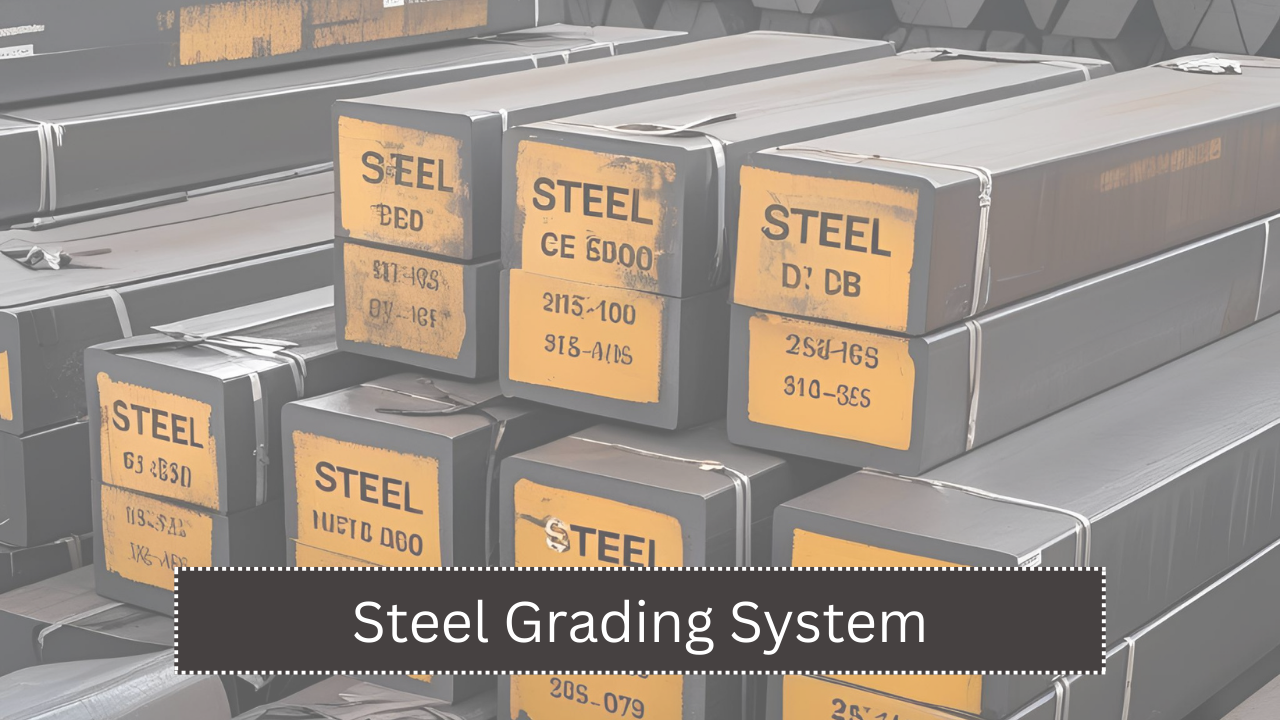Steel plays a key role in many industries, including construction, automotive, manufacturing, and aerospace. But not all steel is the same. Different types of steel have different properties, such as strength, flexibility, corrosion resistance, and heat tolerance. That’s why engineers and manufacturers rely on grading systems to identify the right type of steel for each application.
Three of the most well-known grading systems used worldwide are AISI (American Iron and Steel Institute), ASTM (American Society for Testing and Materials), and EN (European Norm). Understanding these systems helps buyers, builders, and engineers make better decisions when selecting steel products.
Why Steel Grading Systems Matter
Grading systems make it easier to:
- Compare steel from different suppliers
- Ensure quality and safety
- Choose the correct material for the job
- Understand the chemical composition and mechanical properties
- Meet industry standards and international codes
1. AISI (American Iron and Steel Institute)
AISI is one of the oldest and most recognized steel classification systems, mainly used in North America. It categorizes steel into two main types:
- Carbon steel
- Stainless steel
AISI uses a combination of numbers to describe steel. The first digit often shows the steel type, while the next two digits indicate the carbon content or alloy group.
AISI Carbon Steel Numbering System
| Series | Type | Main Use |
|---|---|---|
| 10xx | Plain carbon steel | Construction, automotive parts |
| 11xx | Resulfurized carbon | Free-machining parts |
| 13xx | Manganese steel | Heavy equipment, gears |
| 41xx | Chromium-molybdenum | Aircraft parts, high-strength tools |
AISI Stainless Steel Grades
| Series | Structure | Properties | Uses |
|---|---|---|---|
| 200 | Austenitic | Low nickel, cost-effective, corrosion resistant | Kitchenware, utensils |
| 300 | Austenitic | High corrosion resistance, non-magnetic | Medical tools, food processing |
| 400 | Ferritic/Martensitic | Magnetic, hard, less corrosion resistance | Blades, fasteners |
AISI grades like 304 and 316 are common stainless steels. Grade 304 is known for excellent corrosion resistance, while 316 has added molybdenum for better performance in salty environments.
2. ASTM (American Society for Testing and Materials)
ASTM is a standards organization that defines specifications for materials, including steel. Unlike AISI, ASTM does not use a numbering series based on composition. Instead, it assigns a code like ASTM A36 or ASTM A516 to steel types, each with its own detailed standard.
ASTM standards focus on:
- Mechanical properties (strength, ductility)
- Chemical composition
- Testing methods
- Tolerances and surface quality
Examples of Common ASTM Steel Standards
| Standard | Type of Steel | Properties | Applications |
|---|---|---|---|
| A36 | Structural carbon steel | Good weldability, low cost | Bridges, buildings, oil rigs |
| A516 | Pressure vessel steel | High strength at low temperatures | Boilers, tanks, pressure vessels |
| A572 | High-strength low-alloy steel | Excellent strength-to-weight ratio | Beams, columns, structural components |
| A240 | Stainless steel sheet/plate | High corrosion resistance | Food processing, chemical industries |
ASTM standards are widely accepted in the U.S. and globally. Engineers often use ASTM steel specifications in blueprints and contracts to ensure uniform quality.
3. EN (European Norm)
The EN system is the European standard for materials, including steel. These standards have replaced older national systems like BS (British Standards), DIN (Germany), and AFNOR (France). EN steel designations are more complex and include steel grade numbers, mechanical properties, and chemical composition.
EN standards use a format like EN 10025 S355JR, where:
- EN 10025: The standard number (structural steel)
- S355: Steel grade (S = structural steel, 355 = minimum yield strength in MPa)
- JR: Impact test requirement (JR = absorbed energy 27J at room temperature)
Common EN Steel Grades
| Standard | Steel Grade | Tensile Strength | Main Use |
|---|---|---|---|
| EN 10025 | S235 | 340–470 MPa | General construction |
| EN 10025 | S355 | 470–630 MPa | Bridges, offshore structures |
| EN 10028 | P265GH | 410–530 MPa | Boilers, pressure vessels |
| EN 10210 | S420NH | 520–680 MPa | Hollow sections for structural use |
EN steels are widely used across Europe and in international projects that require conformity to EU rules.
Key Differences Between AISI, ASTM, and EN
| Feature | AISI | ASTM | EN |
|---|---|---|---|
| Region of Use | North America | Global (U.S. origin) | Europe (European Union countries) |
| Format | 3-digit number (e.g., 1045, 304) | Letter-number combo (e.g., A36) | Standard + steel grade (e.g., S355JR) |
| Focus | Composition-focused | Testing and performance | Strength and application-based |
| Steel Types Covered | Carbon and stainless steel | Structural, pressure vessels, etc. | Structural, pressure, mechanical uses |
| Examples | 1018, 4140, 304 | A36, A572, A516 | S235, S355, P265GH |
Which Steel Grading System to Use?
Choosing the right system depends on:
- Location of the project: Use EN in Europe, ASTM in the U.S., AISI for North America
- Industry standards: Aerospace and medical industries may follow strict ASTM rules
- Application type: Construction, pressure vessels, or corrosion-prone environments
- Supplier specification: Some manufacturers provide steel based on one system only
Engineers often convert between systems using steel comparison charts or equivalence guides.
Steel Equivalents (Approximate)
| AISI | ASTM | EN (Equivalent) |
|---|---|---|
| 1018 | A29 | C18E (EN 10083) |
| 1045 | A830 | C45E (EN 10083) |
| 4140 | A29 | 42CrMo4 (EN 10083) |
| 304 | A240 | X5CrNi18-10 (EN 10088) |
| 316 | A240 | X5CrNiMo17-12-2 (EN 10088) |
Note: Always verify mechanical properties and certifications before using substitutes.
Final Analysis
Steel grading systems like AISI, ASTM, and EN help ensure consistency, safety, and quality in steel applications across industries. While each system has its own method of classification, all aim to provide clear information on what a specific type of steel can do. Understanding these grading systems allows manufacturers, engineers, and builders to make informed choices that match the demands of each project. Whether working locally or globally, knowing how to read and compare steel grades is essential for success in any field involving steel.

